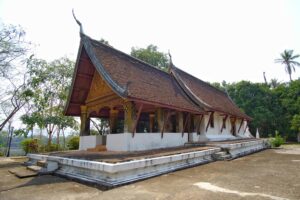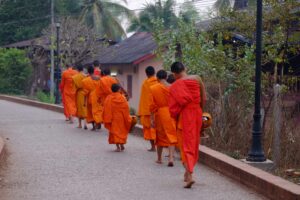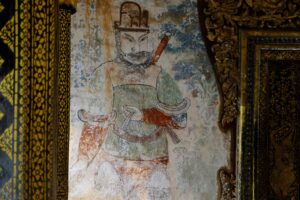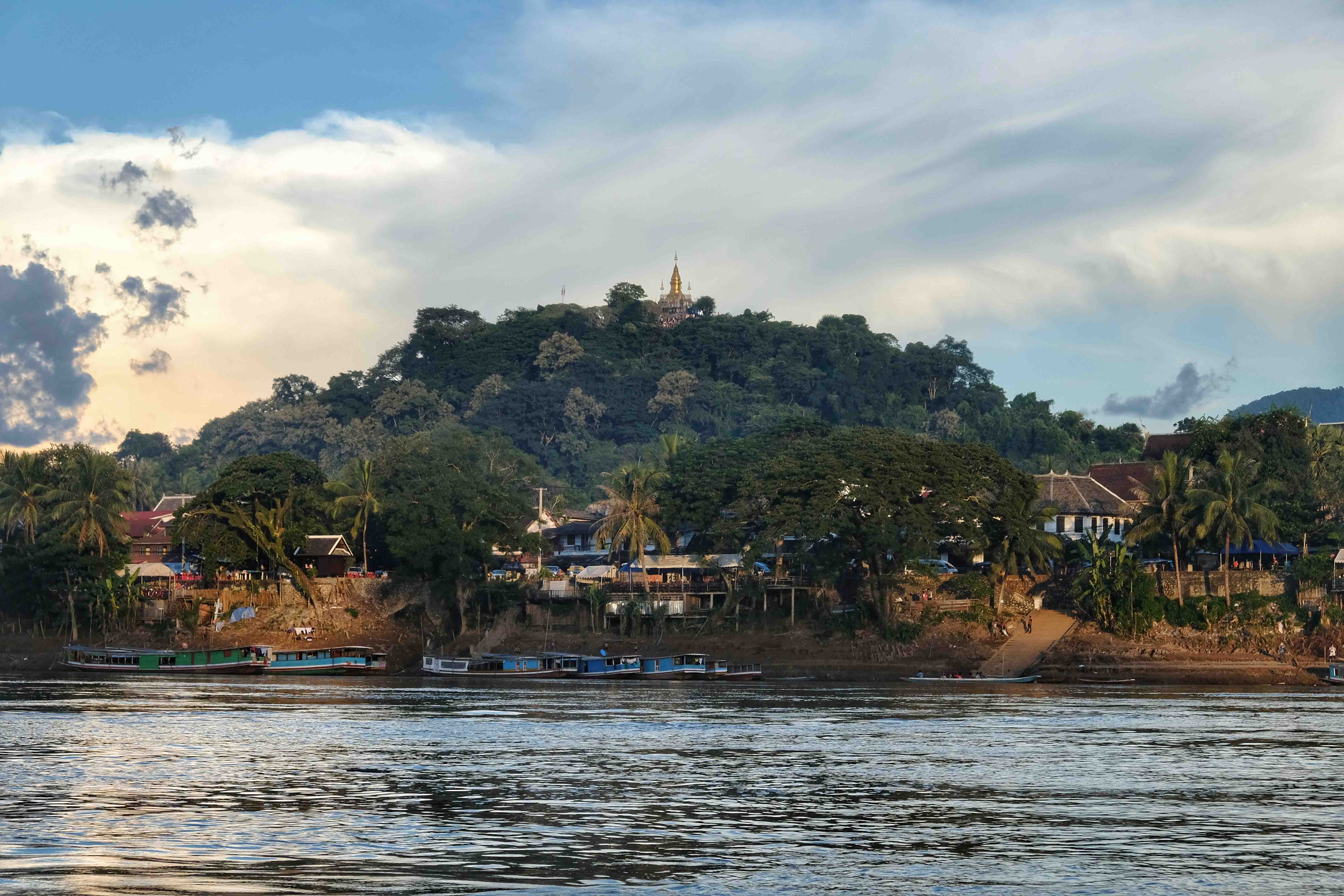Across the river lies a new adventure
Looking for the perfect day out? Across from Luang Prabang lies the town of Xieng Maen and the district of Chomphet. Many visitors overlook this area but its charms and history are impressive and you are likely to have the place to yourself.
To get to Chomphet, take the public ferry behind the former royal palace. The trip takes about 5 minutes depending on how many vehicles are on board. On the opposite bank, vendors are busy on the roadside above the landing with large steaming pots of boiled eggs and clouds of wafting smoke from charcoal grills sizzle with salted grilled fish and sour pork sausages. If you go early enough you may see lines of monks at morning alms.
The first left turn above the pier leads you south to Ban Chan Neua, the pottery village. This village has been turning out pots for 400 years. Huge lumps of sticky red clay are processed and worked using traditional techniques. It is mesmerizing to watch hands coax the clay on a potter’s wheel into bowls, cups, and lamps, and items made here can be found all over the province. It’s a great place to find a unique souvenir!
Backtracking toward the pier, encounter a royal cemetery. Hardly any information is available about this site and the trail to it is overgrown with vines and rotting leaves. It leads to a large white stone monument with a sign in French “Here lies Queen Khamouane”. Banana leaf and marigold offerings placed on the tomb indicate that it is still venerated. Below, scattered on the hillside, are some graves. Many of the graves are quite small, they are believed to be of young princes and princesses who drowned in a disastrous boating accident on the Mekong in 1931.

Return to Xieng Maen to visit this charming village that flanks both sides of a path north of the boat landing. The temples lining this trail have important links to the history of Luang Prabang. The first temple reached is Wat Xieng Maen established in 1592 during the reign of King Xaysetthathirath. It was here that the Prabang statue, for which the city is named, was housed for seven days on its way back from Thailand. Wat Chomphet is next and reached by a staircase of 123 steps. The views from the top are outstanding as you can see the whole of the misty green peninsula backed by blue hills. Surprised to hear the faint sounds of dance music at this isolated spot, a monk appeared with a key to let me have a look inside. I wondered how many monks resided at Wat Chomphet.
“Just me” he answered. It’s q uite austere inside with white plastered walls and a simple altar, but the historical significance of this temple is manifested outside. Two red brick stupas lean precariously containing the relics of the wives of a former king.
The trail then brings you to the rustic Wat Long Khoun complex. As part of the coronation ceremony, kings would spend three days meditating here. The temple has some impressive murals. On each side of the door are two Chinese-style figures. Legend says that Chinese troops who rested at the temple in 1890 could not sleep, they were seeing ghosts in their dreams, so two fierce-looking guardians were painted on the walls to scare away the ghosts. There is also a walking meditation hall on the leafy grounds, only one of three in the area. On holy days, monks would pace the long corridor in meditation.

Farther upstream, Wat Had Siew is an older temple built in the 18th century and decorated with faded frescoes. Behind the temple stands two giants marking the beginning of a path climbing up the hill to a statue garden of Buddhist imagery scattered amongst the forest. Following a narrow rutted red clay track brings you to Wat Nong Sa Keo. Established in 1657 the temple is built on a pond. Viceroy Phetsarath meditated here after his return from France in 1920 before being abandoned. The temple is built on stilts to save the library’s manuscripts from insects, the only one of this type in the vicinity of Luang Prabang. There are currently renovations being carried out to bring it back to life.
Many more sites and places of interest are in the area to discover for the adventurous that can easily occupy a whole day. Grab your hat, sunscreen, water, and the excellent Hobo map, downloadable online and explore the other side of life in Luang Prabang.
The trail then brings you to the rustic Wat Long Khoun complex. As part of the coronation ceremony, kings would spend three days meditating here. The temple has some impressive murals. On each side of the door are two Chinese-style figures. Legend says that Chinese troops who rested at the temple in 1890 could not sleep, they were seeing ghosts in their dreams, so two fierce-looking guardians were painted on the walls to scare away the ghosts. There is also a walking meditation hall on the leafy grounds, only one of three in the area. On holy days, monks would pace the long corridor in meditation.

Farther upstream, Wat Had Siew is an older temple built in the 18th century and decorated with faded frescoes. Behind the temple stands two giants marking the beginning of a path climbing up the hill to a statue garden of Buddhist imagery scattered amongst the forest. Following a narrow rutted red clay track brings you to Wat Nong Sa Keo. Established in 1657 the temple is built on a pond. Viceroy Phetsarath meditated here after his return from France in 1920 before being abandoned. The temple is built on stilts to save the library’s manuscripts from insects, the only one of this type in the vicinity of Luang Prabang. There are currently renovations being carried out to bring it back to life.
Many more sites and places of interest are in the area to discover for the adventurous that can easily occupy a whole day. Grab your hat, sunscreen, water, and the excellent Hobo map, downloadable online and explore the other side of life in Luang Prabang
Getting There
Lao Airlines has daily flights to Luang Prabang from Vientiane. The public ferry to Chomphet is located at the main pier behind the Luang Prabang National Museum. Check out the excellent Hobomaps to plan your trip in the area at hobomaps.com
TEXT BY Anita Preston
PHOTOGRAPHS BY Anita Preston / Evensong Film



 ລາວ
ລາວ
